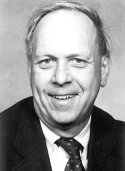New Developments: The Big Bang – in Controversy
von Roger A. Rydin und Stephen J. Crothers
New Developments: The Big Bang – in Controversy
Roger A. Rydin and Stephen J. Crothers
8 October, 2009 – submitted on 2012-08-29 viXra.org Relativity and Cosmology
Theory Behind the Big Bang
Einstein published his Theory of General Relativity (GR) in 1916. Soon after, Georges Lemaitre, Wilhelm de Sitter, and Alexsandr Friedmann investigated different theoretical
models for the evolution of the universe. One class of potential solutions to Einstein’s equations allowed for the possibility that the universe was expanding (or contracting). Einstein dismissed this possibility (as had all other scientists before him) because there was no evidence that the universe was in motion; the universe was, at that time, believed to be static.
The flavor of some of these ideas has been summarized from a website on a fractal theory of the universe. It begins, “10 March 2007 – From New Scientist Magazine by Amanda Gefter: “This idea that matter is spread more or less evenly throughout the universe is embodied in Einstein’s Cosmological Principle. Einstein formulated it after publishing his general theory of relativity, which describes how the distribution of mass bends space-time and creates gravity. It allows cosmologists to use the equations of general relativity to describe the geometry of the whole universe. As a result it has led to a picture of a universe expanding uniformly in a center-less manner from the Big Bang, and in which cosmological measurements have defined meanings.”
“Recall that Einstein’s fiendishly complex equations of gravity can be solved exactly only if we assume that the Universe on the large-scale is homogeneous – that is, it looks the same from every place. This assumption, enshrined in the Cosmological Principle, leads to the Friedman-Robertson-Walker solutions: the Big Bang models. Abandon that assumption and everything we thought we knew about the Universe gets jettisoned, as New Scientist has pointed out (21 August 1999, p 22).”
————————————–
Siehe auch vom Autor Stephen J. Crothers in diesem Blog:
The International Centre for Theoretical Physics and its Involvement in Scientific Fraud
.
- 17. November 2012
- Artikel
